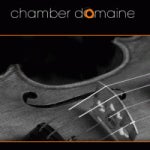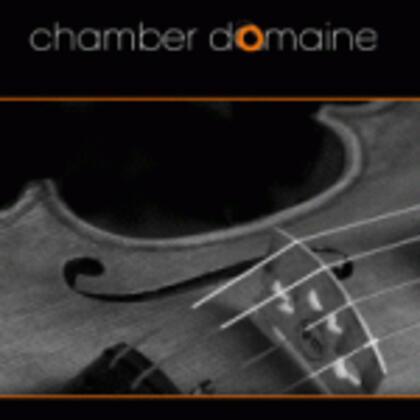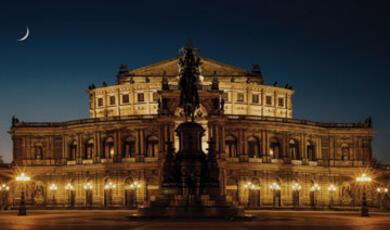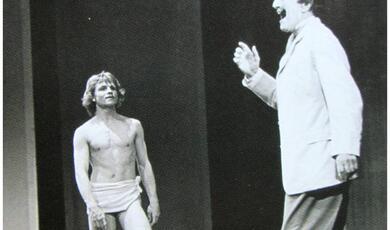Britten and Auden: Inventive Days, inebriated nights at 7 Middagh Street, Brooklyn
Share
- Details
- Text
- Audio
- Downloads
- Extra Reading
In 1936, Britten and Auden established a friendship and creative partnership whilst working at the GPO film unit in Blackheath, London, producing iconic films such as "Night Mail." With war looming, Auden - a pacifist - left for America to be shortly followed by Britten and Peter Pears in 1939. 7 Middagh Street in Brooklyn Heights was to become their home and an extraordinary melting part of creativity. Gypsy Rose Lee, Carson McCullers, George Davis, Chester Kallman were fellow lodgers and regular visitors included Thomas Mann, Aaron Copland, Lotte Lenya, Kurt Weill, Virgil Thomson, Marc Blitzstein and Leonard Bernstein. When Salvador Dali met Auden at one of the infamous house parties he famously asked him "Do you speak English?"
Inventive days were followed by inebriated nights and eventually the inhabitants parted company. However, Britten and Auden enjoyed fruitful collaborations during this period. The lecture will look at their work together including the opera Paul Bunyan, the Serenade for Tenor Horn and Strings, On This Island and the Cabaret Songs.
Download Text
Britten and Auden: Inventive days and inebriated nights at 7 Middaugh Street Brooklyn
Thomas Kemp
27/01/2010
Ladies and Gentlemen, today's lecture recital explores the friendship, collaboration and influence of two iconic figures of the twentieth century, Benjamin Britten and Wystan Auden: great artists whose work captured the sounds and sensibilities of their age, immortalized by Auden as "The Age of Anxiety."
The Wall Street crash of 1929 cast a black shadow over the 1930's and precipitated inflation, mass unemployment and the rise of totalitarianism. As war approached, Auden summarised the mood in his famous poem, 1st September 1939:
I sat in one of the dives
On Fifty-Second Street
Uncertain and afraid
As the clever hope expire
Of a low dishonest decade.
Auden and Britten began their friendship and artistic collaboration in 1935 and were to collaborate on the song cycles, On This Island, Op.11; Our Hunting Fathers, Op.8; Ballad of Heroes, Op.14; Hymn to St.Cecilia, Op.27; the films Night Mail and Coal Face; a series of plays for the Theatre Group and the folk opera, Paul Bunyan, Op.17.
By coincidence, Auden and Britten attended the same school, Greshams in Holt, Norfolk: a progressive public school that encouraged the arts. Auden was seven years more senior than Britten so they did not meet at school but shared the same educational experiences. Both men were highly creative, precocious, homosexual, pacifist and like any self-respecting artist in the 1930's, left wing.
Auden was domineering and advised an impressionable Benjamin Britten on all aspects of his life - relationships, men, politics, religion and morality - advice that was to dominate the themes of Britten's later operas. Indeed, Britten was to say "there is something of Auden in all my operas."
In order to begin to understand Britten, Auden and their work as collaborators, we need to look at their different personalities.
Britten was uptight and "public school". Shy, prim and discreet, he hid his sexuality. He had the appearance of a chastened youth "a loveable talented schoolboy" as Auden dubbed him - an embodiment of his own fantasy - something he was haunted by and attracted to throughout his life. Britten was hard working and highly organised, careful and calculating. He adored his mother and wrote to her constantly.
One insight into his personality was that he used Letts Schoolboy diaries until his mid-forties by which time he had become an internationally famous composer. Britten's opinions and thoughts are captured in these diaries that he punctiliously kept from the age of 14.
Auden was overt and flamboyant. Outwardly homosexual when it was an illegal activity, he was unashamed of who he was and what he stood for. Promiscuous, a heavy drinker - he devoured life and acted on his impulses. He was generous yet controlling. He lived in a shambles yet was ruthless about meeting deadlines and was highly disciplined with his work. He had strong moral convictions and was unafraid to act on them. An example of this is that despite being a pacifist, he volunteered to fight in the Spanish Civil War - his hatred of fascism over-riding his moral objection to conflict. Like Ravel he became an ambulance driver.
Britten and Auden were prolific, imaginative and virtuosic in their respective fields.
The two men first met in 1935 working for the GPO Film Unit in Blackheath. Auden overwhelmed Britten: "Auden is the most amazing man" he wrote in his diary - he also commented that he felt "young and stupid." Auden's brilliant intellect and domineering personality had made a strong impression. Britten also confided in his diary that he could develop a "bad inferiority complex in the company of Wystan Auden."
The work they did together at the GPO Film Unit was groundbreaking. Two films stand out, Night Mail and Coal Face. Britten was 22 and the work at the film unit gave him a salary. On the first page of his diary for 1936, Britten wrote: "1936...finds me earning my living...at the GPO film unit under John Grierson and Cavalcanti, writing music and supervising sound for films...at the rate of £5 per week, but...with the possibility of it being increased to £10 a week or £2 a day."
The musical scores often have unorthodox orchestration in an attempt to recreate industrial sounds. For example, Coal Face included steam (compressed air), sand paper on slate, a siren, coal falling down a shaft and metal booms to make clanking sounds. Britten also pioneered recording techniques to get the sound effects he wanted to make the films as realistic as possible. For example, he reversed the recorded sound of a light jazz cymbal, struck with a hard beater to get the swish of a train passing through a tunnel.
Night Mail includes Auden's famous poem "This is the Night Mail crossing the border, Bringing the Cheque and the Postal Order." The poem uses rhyme and rhythm to imitate the sound of a train - the music too captures these sounds in innovative ways, using a wind machine, sand paper and imaginative orchestration to achieve musical realism. This type of unusual scoring was similar to his contemporary, Edgard Varèse with works such as Ionisation (1930) and Density 21.5 (1936).
Importantly for Auden and Britten, working on these projects that incorporated poetry, film, music and social topics fulfilled the concept of socialist realism that held sway in the Soviet Union and was fashionable in much of Europe in the 1930's. For Britten, music was always to have a social message and this is a theme that runs through his operas and the many works he wrote to engage young people with music. Perhaps the most powerful work that illustrates this is The War Requiem of 1962 written for the inauguration of Coventry Cathedral. Using the poems of Wilfred Owen interspersed with the liturgy of the Requiem Mass, this is one of the most powerful essays in the futility of war and had huge impact - the recording sold 200,000 in the first five months - a record for a piece of contemporary music.
Britten also wrote incidental music for Auden's plays. Auden ran an ensemble, called the Theatre Group, which put on political theatre. Auden spent the early 30's in Berlin and the Theatre Group was inspired by the work of Eisler, Weill and Brecht. Berlin was the liberal capital of Europe in the early 30's and his stay there shaped his social, moral and political views: things that would rub off onto the younger Britten.
The first song cycle Britten and Auden worked on was Our Hunting Fathers, Op.6. Written in 1936, this is a remarkable work for its time, parodying the "fox-hunting" classes and being a powerful anti-fascist statement when appeasement rather than protest was all the rage in politics. This song cycle was written the same year as the Suite for Violin and Piano, which was composed on a trip to Vienna. Indeed, after the Royal College of Music, Britten planned to study with Alban Berg - a composer whom his teacher and mentor, Frank Bridge had introduced him to. Something of this Second Viennese influence can be heard in the first movement, which has the gestures and sound world of Webern. The influence of Stravinsky can be heard in the Dionysian second movement - particularly his Duo Concertant for Violin and Piano of 1930-31. It is worth pointing out that Britten as a brilliant pianist and chamber musician, performed much of this repertoire. Also, it was Auden who was to provide Stravinsky with the libretto for his masterpiece, The Rakes Progress (1951.)
The Finale of the Suite for Violin and Piano is a Waltz - sent up here as a parody of a Strauss waltz with all its attendant schmaltz. A parody that is almost Mahlerian. These influences of the Second Viennese School, Stravinsky and Mahler firmly place Britten as a European composer: outward looking rather than being part of the English pastoral tradition - a tradition Britten viewed as amateur.
In 1939, with the Nazi's taking over Europe, first by stealth then by force, Auden decided to move to America. Britten and Pears were to follow shortly afterwards to avoid being conscripted. They all lived together in an extraordinary house whose lodgers included Carson McCullers, Chester Kallman, Salvador Dali and Gypsy Rose Lee - the burlesque star who was writing her first novel, The G-string Murders. The house was chaotic and the parties wild and debauched - Pears was later to describe it as 'sordid beyond belief.'
Britten and Pears, who had met in 1936, were now an item and their prim, starchy, private nature was the antithesis of the bohemianism of the rest of the house. Whilst in New York, Britten wrote the Seven Michelangelo Sonnets, Op.22 for Pears - full of ardor and displaying the agility and strength of Pear's youthful voice, these songs are like a love letter to Pears: the 16th century texts by the Renaissance genius, Michelangelo are coded love messages to a secret, illicit male lover.
Britten also worked on an operetta, Paul Bunyan with Auden. This was to be withdrawn after its premiere at Columbia University and was to be revived just before Britten's death in 1976. Due to the tensions in the house in Brooklyn, Britten and Pears spent time in California. Much of the tension may have to be to do with the relationship between Auden and Pears. Pears described Auden as "a terrible bully" and Pears was fiercely protective of Britten. Auden wanted to mold Britten and was particularly insistent on Britten acting on his impulses particularly with regard to young men.
The final work that Britten composed with an Auden text is The Hymn to St.Cecilia, which he wrote on the dangerous voyage back to England in 1942. Auden and Britten then lost contact with one another. When Auden died in 1973, Britten did not attend the funeral or memorial service although his music was played. Could it be that Pears forced them apart as collaborators and friends?
One possibility is that ultimately, having two brilliant artistic minds both with highly virtuosic techniques and distinctive, original voices made them incompatible. It is interesting that Britten exerted much more control over future librettists who rarely lasted for more than one project. Another possibility is that their long and often intense collaboration had simply run its natural course.
Alan Bennett's highly acclaimed play The Habit of Art, imagines a reconciliation between the two in 1973 whilst Britten is grappling with the opera, Death in Venice - a plot by Thomas Mann that deals with the infatuations of an older man, Gustav von Aschenbach for a gorgeous, innocent adolescent Tadzio. It is this opera that openly confronts Auden's insistence to Britten that he recognizes and act on his homoerotic desires. It is perhaps this temptation that Britten consistently controlled that led Pears to distrust and dislike Auden and the influence he had over Britten's thinking. I think ultimately it was a clash of personalities that led to their falling out.
Aside from his collaboration with Auden, other works written in America include the Sinfonia da Requiem, Op.20 and the Violin Concerto, Op.15, which were both premiered by the New York Philharmonic under the baton of Sir John Barbirolli.
Back in England, Britten and Pears registered as conscientious objectors and traveled the country performing for the troops. In fact, Britten was to perform for the inmates of Belsen, three weeks after it was liberated with the legendary violinist, Yehudi Menuhin in 1945.
The Serenade for Tenor Horn and Strings, Op.31 was to receive its premiere at the Wigmore Hall in 1943 with the conductor Walther Goehr (a Schoenberg pupil), Denis Brain and Peter Pears. This work shows a new interest in earlier British poetry - perhaps a cathartic experience having worked so closely with Auden over the last seven years. Dedicated to Edward Sackville West, a music critic and novelist who was a supporter of Britten, the texts by various authors, are all about the night.
The work is framed by an Epilogue and Prologue for solo horn, performed in natural harmonics - hence the flat pitch of some of the notes. This sound sets up a primordial, timeless atmosphere.
This work has moments of lush orchestration. The Pastoral for example, recalls the velvet harmony of Elgar. Britten also uses old musical devices to increase this sense of the music being connected to an earlier age. In The Dirge - set to an anonymous 15th Century text - the tenor sings a cantus firmus around which the strings and horn spin a virtuosic counterpoint.
Britten has a free treatment of text - interchanging between aria and recitative. The Elegy provides a good example. Here the text is by William Blake and is mysterious and illusive:
O Rose thou art sick
The invisible worm that flies in the night
In the howling storm
Has found out thy bed of crimson joy
And his dark, secret love
Does thy life destroy.
A coded message that could almost be a metaphor for Britten's personal conflicts. Britten delays the entry of the singer by having an extended and somewhat menacing instrumental section. This provides a song without words that expresses the hidden meaning of the text with musical feeling and atmosphere.
The use of old devices and the inspiration from earlier styles of music and literature can be felt in the Cello Suite No.1. Written for the great cellist, Rostropovich, the Suite recalls those of Bach and the use of the word Canto for the sections that separate the suite movements. Canto meaning Chapter - recalls the organizing structure the Canto has in Dante's Inferno. However, these elements are not used to create a pastiche, they are used to create something original and new. In this way, the neo-classical elements of early works such as the Simple Symphony, The Frank Bridge Variations and the Suite for Violin have evolved into a style that fully assimilates these traditional elements and works with them to create something new. The Cello Suite is a very good example of this.
Indeed it is this ability to assimilate the past but yet create something distinctive and original that is another aspect that Britten shares with Auden. Both came to this from being opposites in personality. Auden sums up their respective positions in a letter to the composer from 1936:
"Goodness and Beauty are the results of a perfect balance between Order and Chaos, Bohemianism and Bourgeois Convention. Bohemian chaos alone ends in a mad jumble of beautiful scraps; Bourgeois convention alone ends in large unfeeling corpses....Technical skill always comes from the bourgeois side of one's nature."
Both had similar middle class backgrounds but met their respective artistic challenges from opposite sides. Auden viewed Britten as being too bourgeois - he needed to react to his conservative background to achieve greatness. Britten viewed Auden as Bohemian. Britten with the devoted help of Pears, created a life organised for his art: Auden lived life for his art.
Ironically, having blazed a trail through the 1930's and 40's it was Auden who joined the establishment first, accepting the position of Professor of Poetry at Oxford University in 1956 - Britten who turned down a knighthood accepted a peerage in 1976, months before his death when he was already gravely sick with heart failure.
Further reading:
BRITTEN AND AUDEN IN THE THIRTIES, Donald Mitchell (1981)
BENJAMIN BRITTEN: A COMMENTARY ON HIS WORKS FROM A GROUP OF SPECIALISTS edited by Donald Mitchell and Hans Keller (1952)
CRADLES OF THE NEW: WRITINGS ON MUSIC 1951-1991 edited by Mervyn Cooke (1995)
JOURNEYING BOY THE DIARIES OF THE YOUNG BENJAMIN BRITTEN 1928-1938 John Evans (2009)
BRITTEN A BIOGRAPHY Humphrey Carpenter (1992)
BRITTEN Michael Kennedy (1983)
©Tom Kemp, Gresham College 2010
Part of:
This event was on Wed, 27 Jan 2010
Support Gresham
Gresham College has offered an outstanding education to the public free of charge for over 400 years. Today, Gresham College plays an important role in fostering a love of learning and a greater understanding of ourselves and the world around us. Your donation will help to widen our reach and to broaden our audience, allowing more people to benefit from a high-quality education from some of the brightest minds.


 Login
Login







